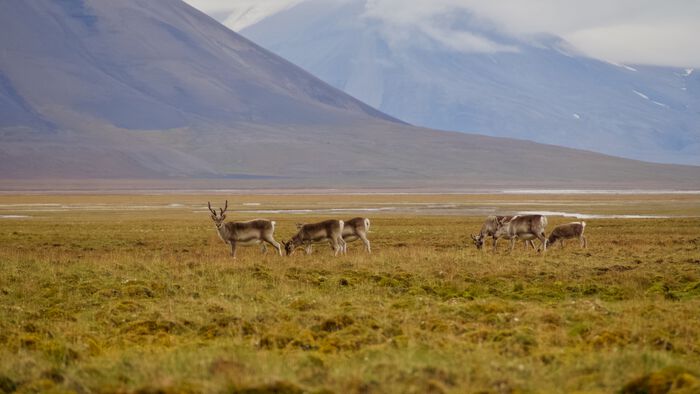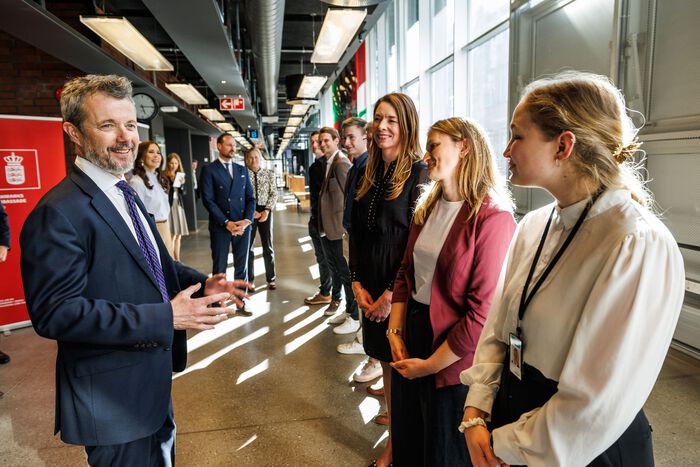Many bodies of water in Norway have lately become noticeably browner. Lakes, rivers and ponds receive organic matter from plants growing around them. Various molecules, that once made up these plants, are mixed into the water. That gives it a brown colour, which has led to this phenomenon being described as “water browning”. Take a look at Oslo’s own Aker river, and you will see it in full effect.
– Water browning is a change in the environment. This should immediately trigger the curiosity of biologists and environmentalists: It is important to know how your ecosystem reacts to such changes, says Raoul Wolf .
He wrote his PhD thesis on this change. Together with Dag Hessen, Tom Andersen and Ketil Hylland from the Department of Biosciences at the University of Oslo, he started out with a small experiment – and ended up with a very large one. Every new result meant new questions to answer. In the end, brown water turned out to be bad news for small animals in many ways, but it can also mean new opportunities for some species. In any case, the ecosystem will never be the same again.
Small ponds in a black box

– At first we did a small experiment with an animal called a water flea. A tiny crustacean who lives in freshwater. We wanted to look at how varying amounts of water browning and UV-light affected them.
Raoul brings out a black plastic box with 96 holes, or “wells”. Each is a potential artificial pond.
– In every one of these wells there was a single, small water flea.
Organic matter was dissolved into water, and the black box was covered with a board of LED-diodes emitting UV-light. Each well became a tightly controlled environment, where some water fleas lived in clear water and others lived in increasingly browner water. Some experienced intense light, as if the sun was shining brightly, and others lived under a constantly overcast sky. All in one little black box.
Looking for damaged DNA
– We already know that for many organisms, intense UV radiation is not good. When you are out in the sun at a high altitude you get a sunburn – and if you are a small, transparent animal in the water, it is even worse. The organic matter that causes water browning also absorbs a lot of UV-light. That means water browning should be good news for these small, transparent animals. But in our small experiment, it was not.
– To assess the damage I used a method called a “comet” assay. If there is damaged, or fragmented, DNA in the cells of the water fleas, we can see it. The undamaged DNA in a cell looks like the head of a comet, and the damaged DNA is the tail behind it.
The “comets” revealed that the brown water did not protect the water fleas from UV-light, as expected. In fact, brown water coupled with UV-light was very damaging. The DNA of water fleas living under such conditions were even more fragmented than that of those who lived in what should be a very dangerous environment: UV-radiation and clear water. Quite the big surprise, but also an opportunity for more questions about the role of water browning in freshwater. What did cause such damage?
Surprises are opportunities
- I looked at the literature on this topic, and found a clue: There must have been some kind of interaction between the water browning and the UV-light, Wolf says.
– It could be that the organic molecules absorbs UV-radiation. Then they can react with oxygen in the water. That gives us something called Reactive Oxygen Species, or ROS for short. These radicals can be quite harmful. Maybe this was hurting our water fleas? That is when we went back to the lab again.
When the experiment was repeated, this was exactly what they found: Brown water and UV-light created a lot of Reactive Oxygen Species.
The phantom midge larvae
Reactive Oxygen Species are harmful, but Wolf and his team wanted to see how this effect of water browning was affecting larger ecosystems and wild animals. They had the perfect candidate for studying DNA damage in a wild species too: The phantom midge larvae, a small predator. It is almost completely transparent and thus vulnerable to UV-light.
One reason the phantom midge larvae was such a good choice for this study, is because of their prey. It feeds on the arctic fairy shrimp, a species that is struggling in places where the water is becoming browner. They could be struggling because the phantom midge larvae is expanding its range and becoming more common in places where water is browning. If that is the case, water browning is an example of how a seemingly small change can cause larger changes in the environment. Water browning may be the reason behind a change in the distribution of species.
Surviving an invisible threat
- When we got the results, we saw that they were the opposite of what we saw in the laboratory experiment. Phantom midge larvae who lived in the ponds with the brownest water, had very little DNA damage.
They were able to avoid the threat, even in high risk areas with a lot of water browning.
– How could this be so different in the field? Well, in the first experiment we used very shallow artificial ponds. But the real ponds in our field area were deeper, sometimes a meter deep.

Wolf had looked at and measured water browning, UV-radiation and the formation of reactive oxygen species. Now the exact location where an animal lives could turn out to be important too. Not geographically, but at what depth below the surface.
Most reactive oxygen species are formed by the surface, because UV-light does not penetrate deep into the water. Visible light, on the other hand, can penetrate deeper and create ROS at about one meter below the surface; but it is much less effective than UV radiation.
– With this information we could describe what happens. The majority of ROS formation takes place in the first meter below the surface, anything below is too small to be relevant. This is why I could see a result in the shallow artificial ponds, but not in the deeper ponds, he explains.
– We even measured the tipping point when water browning went from having a negative effect on the organisms to having a positive effect and protecting them from UV radiation. It is at around 2 cm below the surface. Ideally an organism should stay lower than 2 cm below the surface.
The largest change in recent years
Wolf's advisor Dag Hessen points out that up until now, it is has been an open question how water browning is affecting the formation of Reactive Oxygen Species. To model where exactly ROS are created in the water column, is a large step towards understanding more about the water browning phenomena.
– This might be the largest change in northern freshwater ecosystems that we have seen in many years, and it has consequences on many important processes. It is a large field of study, and we have many colleagues in different countries who are looking at different consequences of water browning on everything from algae and fish production, to the formation of greenhouse gases, transportation of environmental pollutants and a lot of other processes.
– With Wolf's competence as an ecotoxicologist he was able to study the effects of water browning on DNA, and show the damage it can cause for species living in freshwater. The methods he brought with him from another field proved very useful in studying ecological responses in nature.
Long lasting ripple effects
Wolf started with a black box and 96 artificial ponds. Along the way he has examined everything from the laws of physics and how sunlight affects molecules in the water, to what effect this has on where animals live and who they eat. A seemingly small thing like browner water can cause quite a few ripples.
At the moment, Wolf is analysing the results of a large experiment with even more levels of complexity. Maybe the effects of water browning and UV light can have an impact on later generations as well? This time, the little black box was too small. In almost a thousand artificial ponds, small animals called daphnia lived under different conditions. Their offspring were allowed to live a more relaxed life, in a nicer environment. Three generations on, will we still see the ripples caused by the conditions their ancestors lived in?
– I'm currently finishing the analysis and writing up the article. Look out for it later this year, Wolf says.
Scientific papers:
Wolf R, Andersen T, Hessen DO, Hylland K. 2017. The influence of dissolved organic carbon and ultraviolet radiation on the genomic integrity of Daphnia magna. Functional Ecology 31(4): 848-855, https://doi.org/10.1111/1365-2435.12730
Lindholm M, Wolf R, Finstad A, Hessen DO. 2016. Water browning mediates predatory decimation of the Arctic fairy shrimp Branchinecta paludosa. Freshwater Biology 61(3): 340-347, https://doi.org/10.1111/fwb.12712
Wolf R, Thrane JE, Hessen DO, Andersen T. 2018. Modelling ROS formation in boreal lakes from interactions between dissolved organic matter and absorbed solar photon flux. Water Research 132: 331-339, https://doi.org/10.1016/j.watres.2018.01.025
See Raoulf Wolf explain his work:




